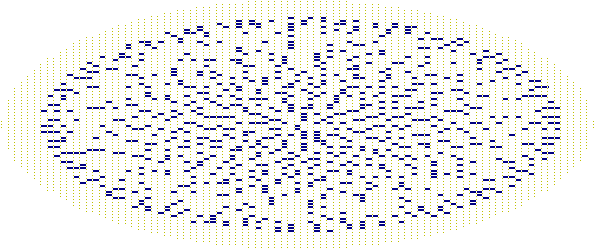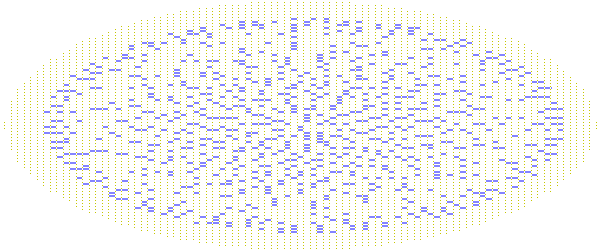Thinned Phased Array

Figure 1: Thinned Phased Array
Thinned Phased Array
Thinned arrays are seldom used phased arrays with a reduced number of radiating elements. The reducing of elements to a fraction of those needed completely to fill the aperture doesn't suffer a serious degradation in the shape of the main beam. The gain of a thinned array is that due to the actual number of elements. The beamwidth of the main beam is that of the full aperture. But the sidelobes are degraded in proportion to the number of elements removed.
Example given:
The figure shows a thinned array with randomly removed elements from the regular grid.
If the array has been thinned so that only 25 percent of elements are used,
its main beam gets a –3 dB- beamwidth of less than 1 degree. However,
about 75 percent of the power is delivered to the sidelobe region.
The shown in Figure 1 example is a thinned phased array of AN/FPS-115 “Pave Paws”.
The longest row contains 32 elements.
The antenna has got 2,677 active elements and of the active elements only 1,792 are powered.
This may increase the side lobe level by about 4 decibels[1]
with respect to the full-filled system.
Sources and ressorces:
- Brockway McMillan et al.: “Radiation Intensity of the PAVE PAWS Radar System”, National Research Council Washington DC, 1979 (411317) p. 16 - 18 (online)

